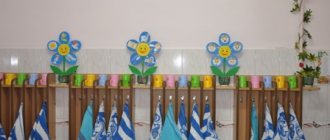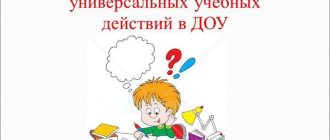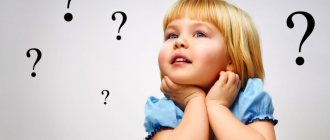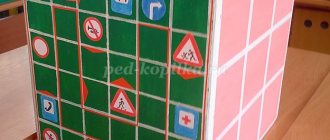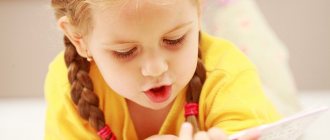Books on mathematics for preschoolers
- A. Boloshistaya “Mathematics around you.” The workbook includes tasks to develop mathematical thinking. Intended for children 4-5 years old.
- K.V. Shevelev “Mathematics for preschoolers.” The workbook consists of developmental tasks addressed to children aged 6-7 years. The classes are designed to prepare you for school.
- L.G. Peterson “One is a step, two is a step.” The series of manuals is designed to develop a mathematical way of thinking, imagination, and the ability to analyze.
- M. Druzhinin “The Big Book of Leisure.” The book includes rebuses, riddles, puzzles. The tasks are designed to develop analytical thinking, broaden your horizons, and activate your imagination.
- O. Zhukova “Mathematics for preschoolers.” The coloring book contains game exercises that will teach your child to count to 10 and help develop perception and logic.
To develop your child’s logic, you will find this article about logic games for children 3-4 years old useful. how to develop a child’s logic at 4-5 years old . about the development of logic in children aged 5-6 years here and for children 6-7 years old in this article https://profymama.com/razvivalochka/igry-upragneniya/logika/igry-razvivayushhie-logiku-rebenka-v-6- 7-let.html
Mathematical problems for ingenuity
Puzzles are recommended for children of older preschool age. The most common are geometric problems with counting sticks. They are called geometric because the task is based on the composition and transformation of various figures. To complete the task, you need to prepare counting sticks and chart tables with images of figures.
You need to try to choose tasks with different conditions and solutions in order to stimulate the baby’s search activity.
Problems for preschoolers
“Assembling objects from pictures” . A picture depicting some object is placed in front of the child. It could be a house, a bench,... The child must, focusing on the sample, put together a similar object from sticks. Subsequently, you can complicate the task by asking the child to add up the shown picture without having an example in front of his eyes, that is, from memory.
"Shape Transformation" . The task is carried out in 2 stages. First, the adult shows the child a figure and asks him to make the same one out of sticks. Instructions for the second stage: you need to determine which and how many sticks should be removed to create a different figure.
"Geometric Examples" . The child needs to analyze the presented geometric shapes, imagine what the final result will look like and choose an answer.
"Count the figures." The child is given an image of a complex geometric figure consisting of many details; he must count how many triangles, rectangles, and squares are in the figure.

